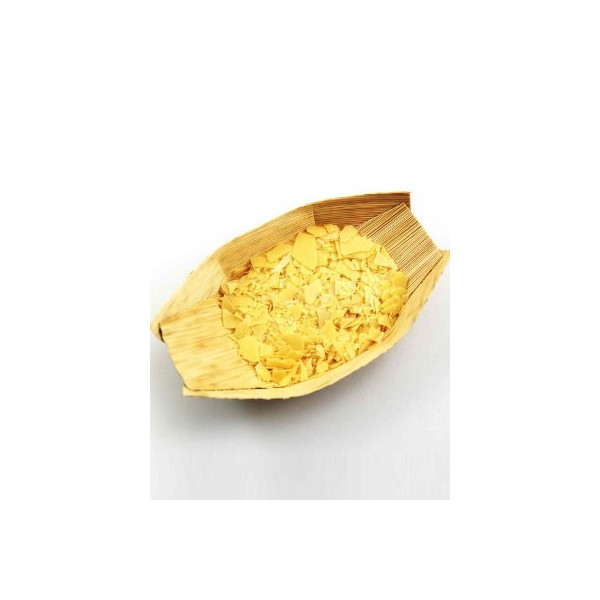
Their Scientific Opinion states: “The panel considered that carnauba wax would be predicted to not be significantly absorbed from the diet and that if hydrolyzed its main constituents could be absorbed and incorporated into normal cellular metabolic pathways. The European Food Safety Authority (ESFA) reaffirmed the safety of carnauba wax at current usage levels, with its toxicity within the margins generally classified as No Observed Adverse Effect Levels (NOAELs).
#CARNAUBA WAX EDIBLE SKIN#
Making Cosmetics labels it a “Non-gelling thickener, viscosity and consistency enhancer (provides good texture and stability due to high melting point), emollient and moisturizer, good skin protectant properties.” Its high melting point allows lipstick to resist melting, particularly if left in your purse in a hot car.įor those who make their own cosmetics, carnauba wax is even available on Amazon, where it is advertised: “Natural thickener with softening effect.” It imparts the gloss to lip gloss and lipstick. It is also the hardest of the commercial vegetable waxes.Ĭarnauba wax is used in the cosmetic industry in mascara and eye liner. The coating adheres because the wax is insoluble in water. Carnauba wax is widely used in the pharmaceutical industry to coats pills, and make tablets easier for patients to swallow. It is also used in shoe polishes, furniture polish, automobile wax, and a coating for dental floss.
#CARNAUBA WAX EDIBLE FREE#
It is a complex mixture of aliphatic (waxy) esters, hydroxyl esters and cinnamic aliphatic diesters, along with free acids, free alcohols, hydrocarbons and resins. Some snack foods and candies, such as M&Ms, Skittles, Gobstoppers, Fruit Chews, Tic Tacs and Good ‘n Plenty are also coated with carnauba wax - which gives them a glossy finish.Ĭalled the “Queen of Waxes,” as well as Brazil wax and palm wax, carnauba wax comes from the leaves of the tropical palm, Copernicia prunifera (copernica cerifera), native to Brazil. Of course, the surest way to remove wax is to peel the fruit. However, you can use a 50-50 mixture of vinegar and water to remove the wax.

FDA does not recommend the use of soap, detergent, or commercial produce washes” - according to the FDA’s website. The FDA does not recommend using detergent to remove wax. “FDA recommends washing fruits and vegetables under running water just before eating, cutting or cooking. We lack the ability to break down or absorb these waxy compounds. Note that these waxes are not digestible by humans. The waxy coating is typically not visible, but may turn white if the produce has been subjected to excessive heat and/or moisture. These are the waxes most commonly applied to apples. Organic produce will not be coated with synthetic waxes, but may include shellac or carnauba wax. Others originate from insects: beeswax and shellac (from the female lac beetle). These include : vegetable (from sugar cane or soy), as well as carnauba (from carnauba palm leaves), or bayberry wax (from bayberry fruit). Some of these coatings are synthetic (petroleum-based), while others are natural.

These waxes are typically esters of fatty acids combined with long-chain alcohols. Signs may read : “Coated with food-grade vegetable, beeswax, or lac-based wax or resin to maintain freshness.”

Produce that has been so treated must be labeled. Food and Drug (FDA) regulations for food additives, and have been declared safe for human consumption. These waxes are edible they must meet U.S. The amount of wax applied is small, perhaps a drop or two per item. Waxes are typically applied by dipping, brushing or spraying the produce.

Dyes may also be added to improve appearance.įoods commonly waxed include: apples, oranges, tangerines, lemons, peaches, bananas, melons, avocados, cucumbers, tomatoes, bell peppers, eggplant, turnips, cassava and potatoes. Aesthetics matter in the marketplace consumers are drawn to shinier, glossier produce. These waxes help prevent moisture loss, limit bruising and spoilage, improve appearance, inhibit mold growth, and extend shelf life. These commercial waxes are routinely applied to many fruits and vegetables to help preserve and protect them during shipping and storage. Prior to packaging, food processors often apply wax to the surface of produce. About half of this natural wax is removed when produce is washed and scrubbed to remove dirt and chemical residues. Some fruit such as apples and plums produce their own natural waxy coating, called the cuticle, to help retain moisture and to form a barrier to prevent microorganisms from entering the fruit.


 0 kommentar(er)
0 kommentar(er)
